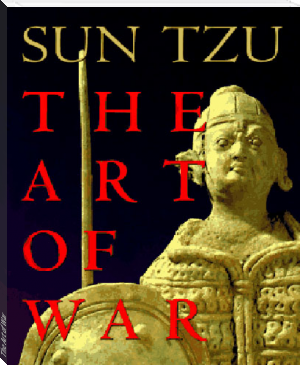The Art of War - Zi Sun (best books to read for success .txt) 📗

- Author: Zi Sun
- Performer: 0976072696
Book online «The Art of War - Zi Sun (best books to read for success .txt) 📗». Author Zi Sun
One thing to be noticed in the above is the explicit statement that the 13 chapters were specially composed for King Ho Lu. This is supported by the internal evidence of I. ss. 15, in which it seems clear that some ruler is addressed. In the bibliographic section of the HAN SHU, there is an entry which has given rise to much discussion: "The works of Sun Tzu of Wu in 82 P`IEN (or chapters), with diagrams in 9 CHUAN." It is evident that this cannot be merely the 13 chapters known to Ssu-ma Ch`ien, or those we possess today. Chang Shou-chieh refers to an edition of Sun Tzu's ART OF WAR of which the "13 chapters" formed the first CHUAN, adding that there were two other CHUAN besides. This has brought forth a theory, that the bulk of these 82 chapters consisted of other writings of Sun Tzu — we should call them apocryphal — similar to the WEN TA, of which a specimen dealing with the Nine Situations [15] is preserved in the T`UNG TIEN, and another in Ho Shin's commentary. It is suggested that before his interview with Ho Lu, Sun Tzu had only written the 13 chapters, but afterwards composed a sort of exegesis in the form of question and answer between himself and the King. Pi I-hsun, the author of the SUN TZU HSU LU, backs this up with a quotation from the WU YUEH CH`UN CH`IU: "The King of Wu summoned Sun Tzu, and asked him questions about the art of war. Each time he set forth a chapter of his work, the King could not find words enough to praise him." As he points out, if the whole work was expounded on the same scale as in the above- mentioned fragments, the total number of chapters could not fail to be considerable. Then the numerous other treatises attributed to Sun Tzu might be included. The fact that the HAN CHIH mentions no work of Sun Tzu except the 82 P`IEN, whereas the Sui and T`ang bibliographies give the titles of others in addition to the "13 chapters," is good proof, Pi I-hsun thinks, that all of these were contained in the 82 P`IEN. Without pinning our faith to the accuracy of details supplied by the WU YUEH CH`UN CH`IU, or admitting the genuineness of any of the treatises cited by Pi I-hsun, we may see in this theory a probable solution of the mystery. Between Ssu-ma Ch`ien and Pan Ku there was plenty of time for a luxuriant crop of forgeries to have grown up under the magic name of Sun Tzu, and the 82 P`IEN may very well represent a collected edition of these lumped together with the original work. It is also possible, though less likely, that some of them existed in the time of the earlier historian and were purposely ignored by him. [16] Tu Mu's conjecture seems to be based on a passage which states: "Wei Wu Ti strung together Sun Wu's Art of War," which in turn may have resulted from a misunderstanding of the final words of Ts`ao King's preface. This, as Sun Hsing-yen points out, is only a modest way of saying that he made an explanatory paraphrase, or in other words, wrote a commentary on it. On the whole, this theory has met with very little acceptance. Thus, the SSU K`U CH`UAN SHU says: "The mention of the 13 chapters in the SHIH CHI shows that they were in existence before the HAN CHIH, and that latter accretions are not to





Comments (0)